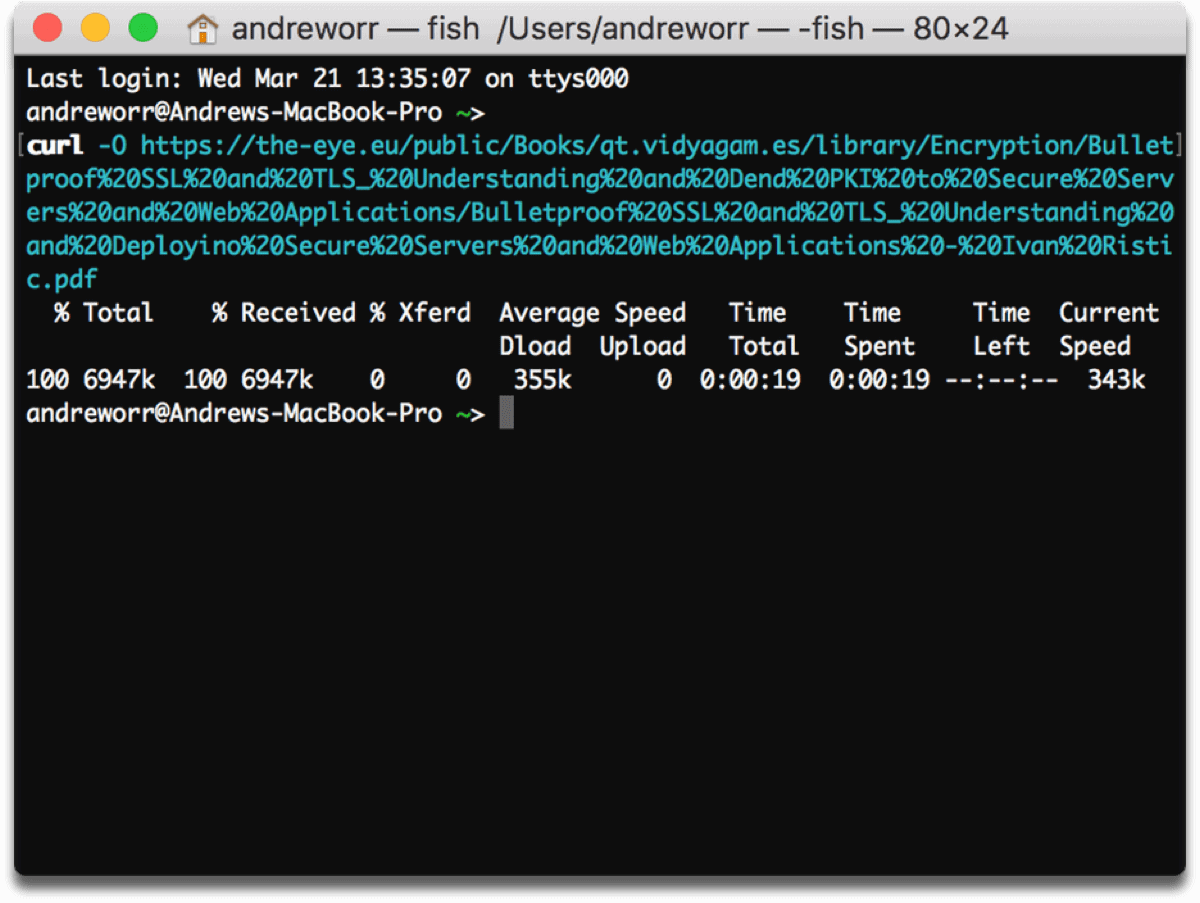| Uploader: | Giorgi |
| Date Added: | 01.06.2016 |
| File Size: | 43.35 Mb |
| Operating Systems: | Windows NT/2000/XP/2003/2003/7/8/10 MacOS 10/X |
| Downloads: | 48905 |
| Price: | Free* [*Free Regsitration Required] |
Download File from the terminal with Mac
In the Terminal app on your Mac, use the mv command to move files or folders from one location to another on the same computer. The mv command moves the file or folder from its old location and puts it in the new location.. For example, to move a file from your Downloads folder to a Work folder in your Documents folder. In our next Terminal tip, we'll show you how to download files from the web. Of course it's probably easier just to use the GUI of Safari, but using Terminal gives you additional stats like file. Press the “ Return/Enter ” key to perform the command. The installation file will download to your Mac’s Applications folder. Open the file to begin the installation, and then follow the on-screen.

Download file on terminal to mac
Beneath the surface of OS X is an entire world that you can access only from the command line. With it, instead of pointing and clicking, you type your commands and your Mac does your bidding. Why would you want to do that? For almost all of your computing needs, the regular graphical user interface is enough. The plan is to cover the most important commands you need to know and show you how to use them. First up: How to navigate the file system from the command-line prompt.
The second line is the prompt, and while it can change from system to system depending on configuration, by default it contains several bits of information. In my prompt, walden is the name of my Mac same as the name in the Sharing pane of System Preferencesand kirk is my user name. To do that you use the ls or list command.
The output of the plain ls command is pretty sparse; it shows you the names of files and folders contained in the current directory including some familiar ones such as Movies, Music, Pictures, and download file on terminal to mac on. Fortunately, you can add a number of optional switches to the ls command that allow you to see more information. Download file on terminal to mac point is that ls can provide additional information about files and folders, depending on the options you specify.
In this case, that additional information includes the name of the user who owns each item in the directory. The kirk kirk next to most of those items above means that each one is owned by the user kirkwho is in the group kirk, download file on terminal to mac.
The other understandable bit of information next to each file and folder is the date and time each one was last modified. These hidden files all have dots. From the command line, you use the cd or change directory command instead. Remember to always type a space after any command that has an additional argument, download file on terminal to mac, such as the name of a directory in the previous example. That should be enough to get you started. Try playing around in Terminal, exploring your folders and files with just those two commands.
If you type cd. Note: When you purchase something after clicking links in our articles, we may earn a small commission. Read our affiliate link policy for more details. Related: MacOS Macs.
How to Download Files with cURL on Command Line
, time: 3:17Download file on terminal to mac

In the Terminal app on your Mac, use the mv command to move files or folders from one location to another on the same computer. The mv command moves the file or folder from its old location and puts it in the new location.. For example, to move a file from your Downloads folder to a Work folder in your Documents folder. Press the “ Return/Enter ” key to perform the command. The installation file will download to your Mac’s Applications folder. Open the file to begin the installation, and then follow the on-screen. Terminal (in your /Applications/Utilities folder) is the default gateway to that command line on a Mac. With it, instead of pointing and clicking, you type your commands and your Mac does your.

No comments:
Post a Comment